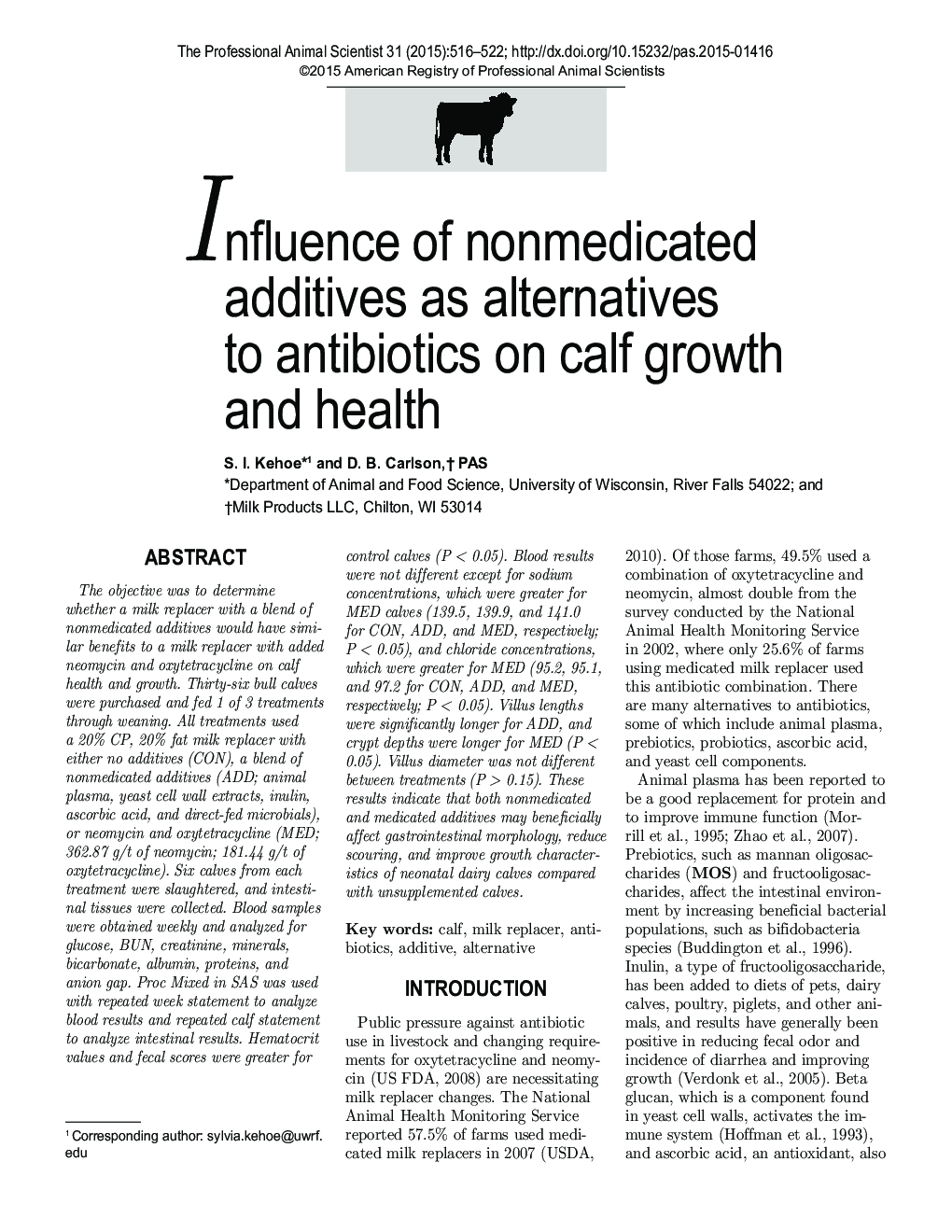| Article ID | Journal | Published Year | Pages | File Type |
|---|---|---|---|---|
| 2453789 | The Professional Animal Scientist | 2015 | 7 Pages |
Abstract
The objective was to determine whether a milk replacer with a blend of nonmedicated additives would have similar benefits to a milk replacer with added neomycin and oxytetracycline on calf health and growth. Thirty-six bull calves were purchased and fed 1 of 3 treatments through weaning. All treatments used a 20% CP, 20% fat milk replacer with either no additives (CON), a blend of nonmedicated additives (ADD; animal plasma, yeast cell wall extracts, inulin, ascorbic acid, and direct-fed microbials), or neomycin and oxytetracycline (MED; 362.87 g/t of neomycin; 181.44 g/t of oxytetracycline). Six calves from each treatment were slaughtered, and intestinal tissues were collected. Blood samples were obtained weekly and analyzed for glucose, BUN, creatinine, minerals, bicarbonate, albumin, proteins, and anion gap. Proc Mixed in SAS was used with repeated week statement to analyze blood results and repeated calf statement to analyze intestinal results. Hematocrit values and fecal scores were greater for control calves (P < 0.05). Blood results were not different except for sodium concentrations, which were greater for MED calves (139.5, 139.9, and 141.0 for CON, ADD, and MED, respectively; P < 0.05), and chloride concentrations, which were greater for MED (95.2, 95.1, and 97.2 for CON, ADD, and MED, respectively; P < 0.05). Villus lengths were significantly longer for ADD, and crypt depths were longer for MED (P < 0.05). Villus diameter was not different between treatments (P > 0.15). These results indicate that both nonmedicated and medicated additives may beneficially affect gastrointestinal morphology, reduce scouring, and improve growth characteristics of neonatal dairy calves compared with unsupplemented calves.
Related Topics
Life Sciences
Agricultural and Biological Sciences
Animal Science and Zoology
Authors
S.I. PAS, D.B. Carlson,
